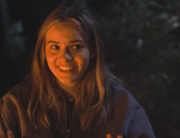Better Living Through Chemistry has wonderful opening credits: smart, clever, and funny. It hearkens back to a time when title sequences set the tone and were an art unto themselves.
If only the rest of the film was as enjoyable. Unfortunately, the filmmakers try too hard by half with consistently diminishing results. The problem is when you decide to take on suburban ennui, you’d better have an interesting, different angle on such a staid subject.
Sam Rockwell plays Doug Varney, a pharmacist who is super-sweet and straitlaced. A real goody-goody. Consequently, everyone takes unctuous advantage of him. He works for his boorish father-in-law (Ken Howard), his wife, Kara (Michelle Monaghan), is a fitness fanatic that completely emasculates him, and his preteen son literally slams the door in his face. You get the picture because you’ve seen it a dozen times before.
Eventually, Doug befriends and then becomes more than friends with a pill-popping, mega-rich woman, Elizabeth (Olivia Wilde), who hates her husband. He opens up a bit, becomes a bit looser, and then the rich wife convinces him to start sampling his own supply. That’s when he finally finds his voice.
As absurd as that sounds, it could work. It could be funny. But BLTC fails miserably in execution. The filmmakers ultimately look down on their characters. They give Doug’s wife no depth whatsoever. She’s just an emasculating bitch who needs to control everyone and refuses to accept her son’s delinquency, and the father-in-law has an incredibly dumb trophy wife.
The script is practically a textbook case of what “elitist urbanites” think of how their suburban brethren supposedly act. By the time the film attempts to deepen the characters, the damage is done. And besides, it’s hard to find depth in such paper-thin caricatures. The rare funny moments come from the performers rather than the script. What Sam Rockwell does to a little girl’s balloon is particularly hilarious.
If there’s one bright spot, it’s the production design. Heidi Adams brings this small suburban town to life, commenting on the quaintness while suggesting the vapidity and frustration residing just underneath. She fills the screen with the level of detail and authenticity missing from the rest of the film.







Leave A Comment